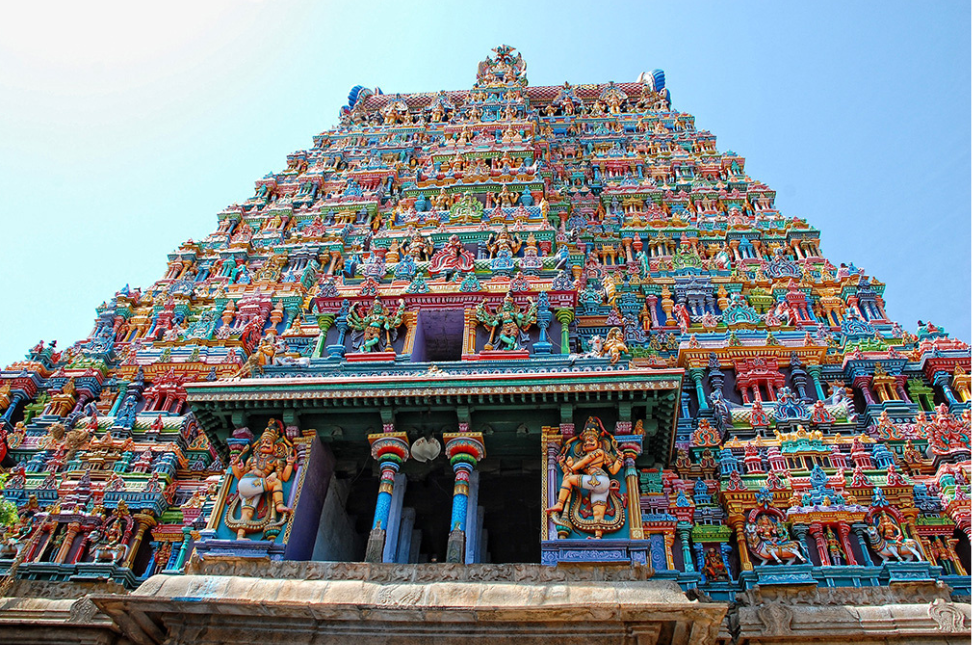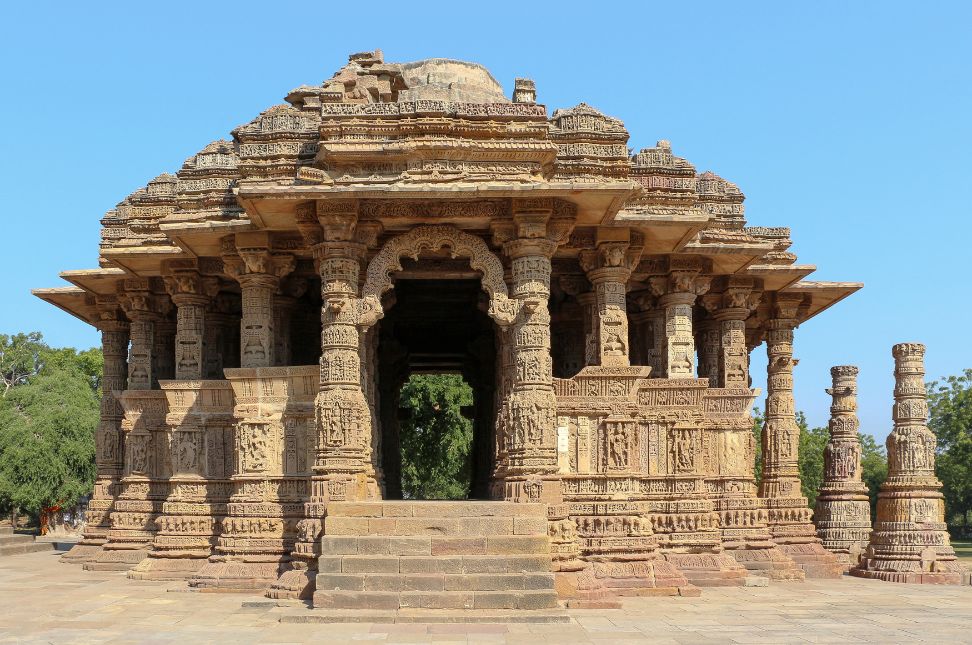The Madurai Meenakshi Temple History is one of the most fascinating aspects of South India’s rich cultural and spiritual heritage. Located in the heart of Madurai, Tamil Nadu, this ancient temple is dedicated to Goddess Meenakshi, an incarnation of Parvati, and her consort Lord Sundareswarar, a form of Shiva. The temple is not only a significant religious site but also a masterpiece of Dravidian architecture, attracting millions of devotees and tourists from around the world.
The Origins of Madurai Meenakshi Temple
The Madurai Meenakshi Temple History can be traced back over 2,500 years, making it one of the oldest and most revered temples in India. According to legend, the temple was originally built by Lord Indra, the king of the gods, who discovered a self-manifested lingam (an abstract representation of Shiva) in the forest. Over time, the temple was expanded and renovated by various dynasties, each contributing to its grandeur and significance.
The most notable period in the Madurai Meenakshi Temple History was during the reign of the Pandya dynasty. King Kulasekara Pandya is believed to have built the original structure of the temple in the 6th century. However, the temple we see today is the result of extensive renovations carried out in the 12th to 17th centuries, particularly under the rule of the Nayak dynasty.
The Nayak Dynasty and Architectural Flourish
The Madurai Meenakshi Temple History took a significant turn during the 16th century when the Nayak rulers of Madurai, especially King Thirumalai Nayak, undertook extensive renovation and expansion of the temple complex. The Nayak dynasty, known for their patronage of arts and architecture, transformed the temple into the sprawling complex it is today, with its towering gopurams (gateway towers), intricate sculptures, and vast courtyards.
The most striking feature of the temple, the southern gopuram, was completed during this period. Standing at over 170 feet, this towering structure is adorned with thousands of colorful sculptures depicting gods, goddesses, mythical creatures, and legendary scenes. The architectural style of the temple is a fine example of Dravidian craftsmanship, characterized by its pyramid-shaped towers, elaborate carvings, and grand scale.
Religious and Cultural Significance
The Madurai Meenakshi Temple History is deeply intertwined with the religious and cultural fabric of Tamil Nadu. The temple is a central part of the daily life of the people of Madurai, with its rituals, festivals, and ceremonies attracting devotees from all over India and beyond. The temple’s primary deity, Goddess Meenakshi, is revered as a powerful and benevolent goddess who grants wishes and protects her devotees.
One of the most significant festivals associated with the Madurai Meenakshi Temple History is the Meenakshi Thirukalyanam, the celestial wedding of Meenakshi and Sundareswarar. This annual event, celebrated with great pomp and splendor, draws millions of pilgrims to Madurai. The festival showcases the rich cultural traditions of the region, with processions, music, dance, and elaborate rituals that have been passed down through generations.
The Legend of Meenakshi
A key element of the Madurai Meenakshi Temple History is the legend of Goddess Meenakshi herself. According to mythology, Meenakshi was born as the daughter of King Malayadhwaja Pandya and Queen Kanchanamala, who ruled the city of Madurai. The royal couple prayed for a child, and their prayers were answered when a three-year-old girl with three breasts and fish-shaped eyes (from which her name, Meenakshi, is derived) appeared from the sacred fire.
The divine voice instructed the king not to worry about the third breast, as it would disappear when the girl met her destined husband. Meenakshi grew up to be a fierce warrior and a just ruler, conquering many lands. When she met Lord Shiva in the form of Sundareswarar, her third breast vanished, and she recognized him as her divine consort. Their marriage symbolizes the union of Shiva and Shakti, the male and female principles of the universe.
The Temple Complex and Its Wonders
The Madurai Meenakshi Temple History is not just about its legends and religious significance but also about the marvels of its architecture and artistry. The temple complex covers an area of about 15 acres and consists of 14 towering gopurams, two golden shrines, several halls, and a sacred pond known as the Porthamarai Kulam, or the Golden Lotus Tank.
One of the most famous halls in the temple is the Hall of Thousand Pillars, or Ayiram Kaal Mandapam. This hall, built by the Nayak rulers, is an architectural wonder with intricately carved pillars, each one unique in its design. The hall also houses a museum displaying ancient sculptures, paintings, and other artifacts that reflect the temple’s rich history.
Another highlight of the Madurai Meenakshi Temple History is the Ashta Shakthi Mandapam, a hall dedicated to the eight goddesses who are considered the protectors of the temple. The mandapam is adorned with exquisite carvings and murals depicting scenes from the life of Meenakshi and the history of the temple.
Preservation and Modern-Day Relevance
Preserving the Madurai Meenakshi Temple History has been a priority for the local community and the government. The temple has undergone several restoration and conservation efforts to maintain its structural integrity and artistic beauty. These efforts ensure that the temple continues to be a place of worship and a symbol of Tamil Nadu’s cultural heritage.
In modern times, the Madurai Meenakshi Temple History continues to inspire millions of devotees and visitors. The temple remains a center for religious activities, cultural events, and community gatherings. It also plays a crucial role in promoting tourism in Tamil Nadu, attracting visitors from around the world who come to admire its architectural splendor and spiritual ambiance.
Conclusion
The Madurai Meenakshi Temple History is a rich tapestry of mythology, architecture, and devotion. From its legendary origins to its current status as one of India’s most important religious and cultural sites, the temple has stood the test of time, preserving the traditions and beliefs of the people of Tamil Nadu. Its towering gopurams, intricate carvings, and sacred rituals continue to captivate all who visit, making the Madurai Meenakshi Temple not just a monument of the past but a living legacy of Tamil Nadu’s spiritual and cultural identity.
Exploring the Madurai Meenakshi Temple History offers a deeper understanding of the region’s heritage and the enduring significance of this magnificent temple in the hearts of millions. Whether you are a devotee, a history enthusiast, or a traveler seeking to experience India’s rich cultural diversity, the Madurai Meenakshi Temple is a must-visit destination that promises a journey through time and tradition.




